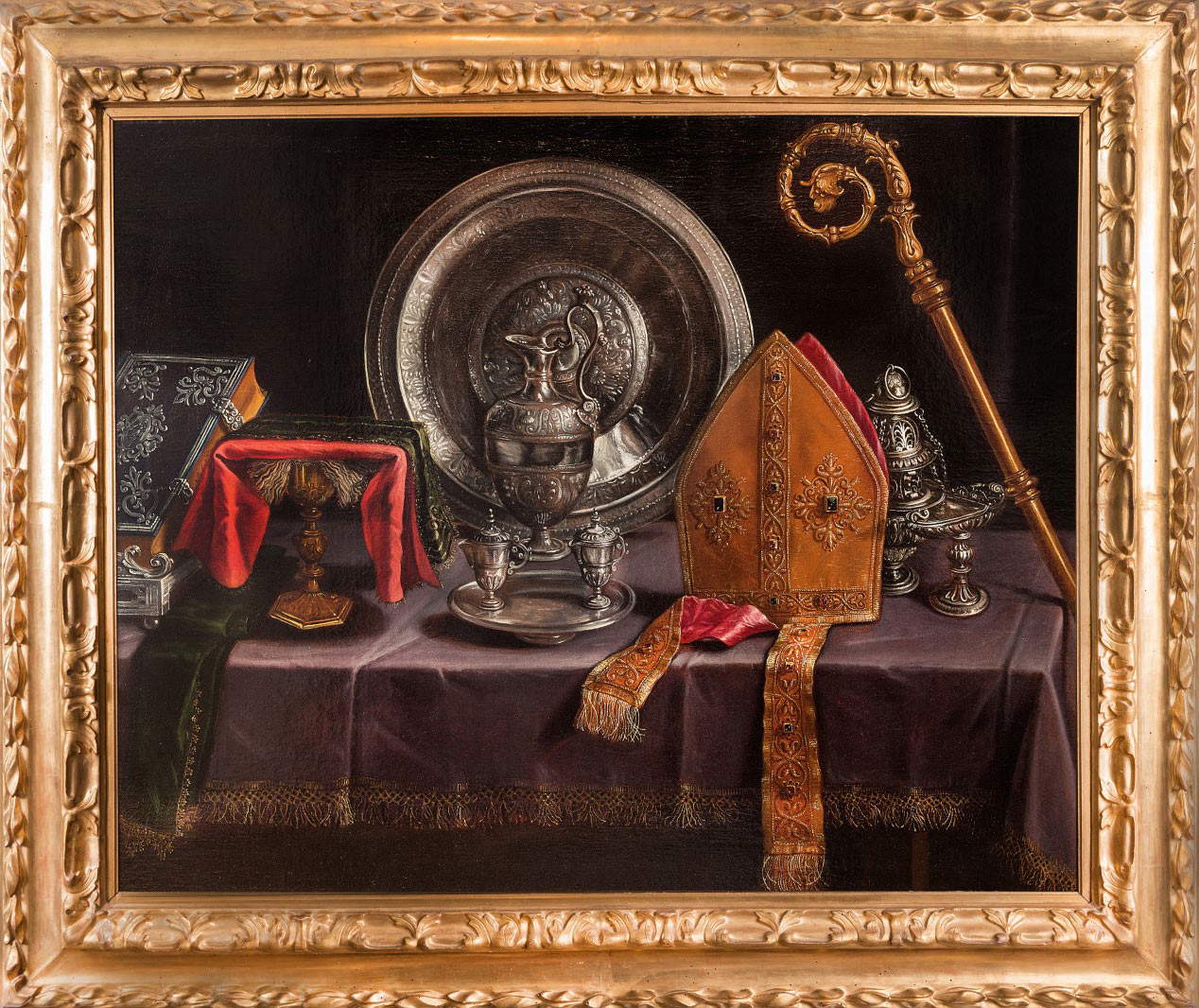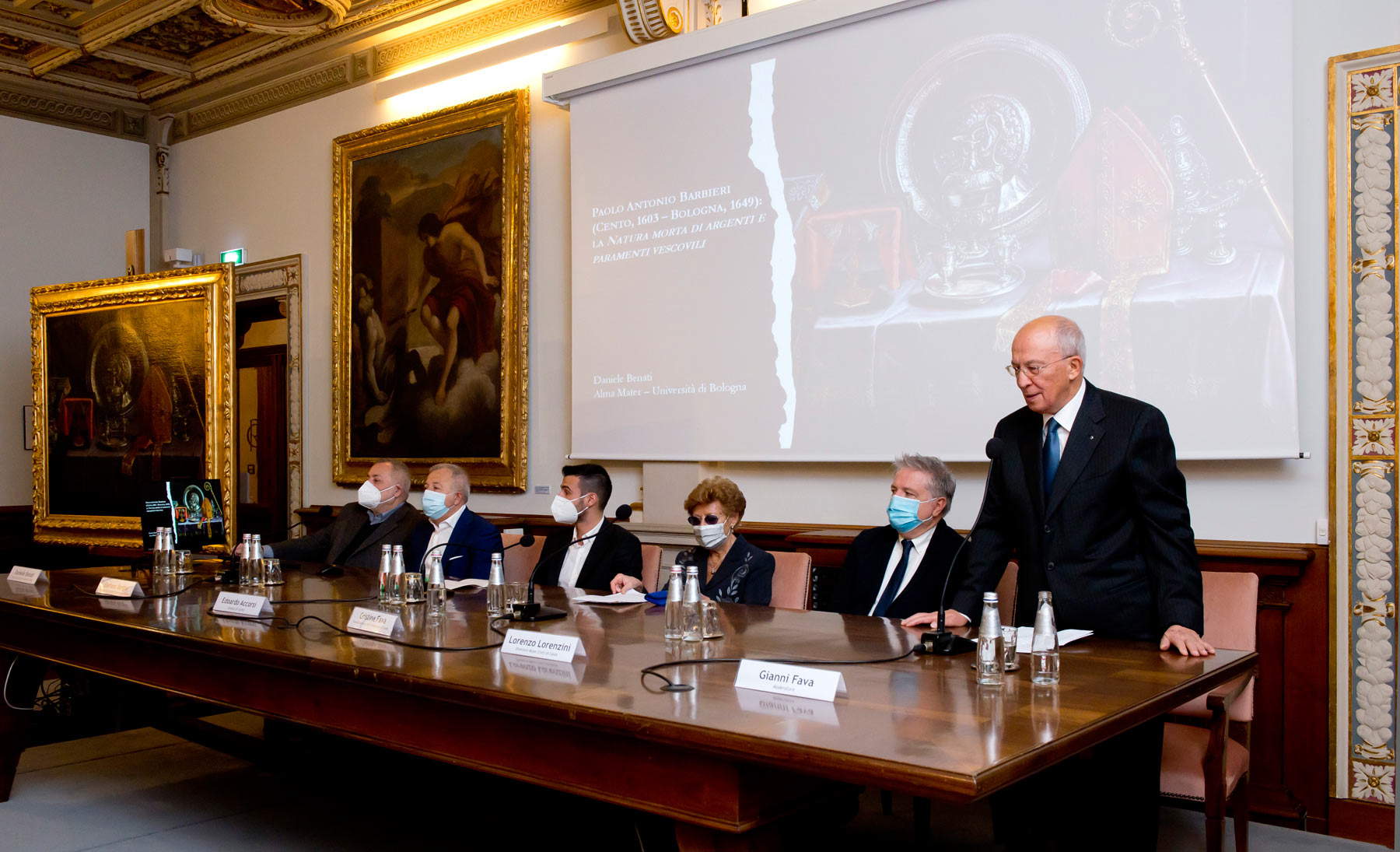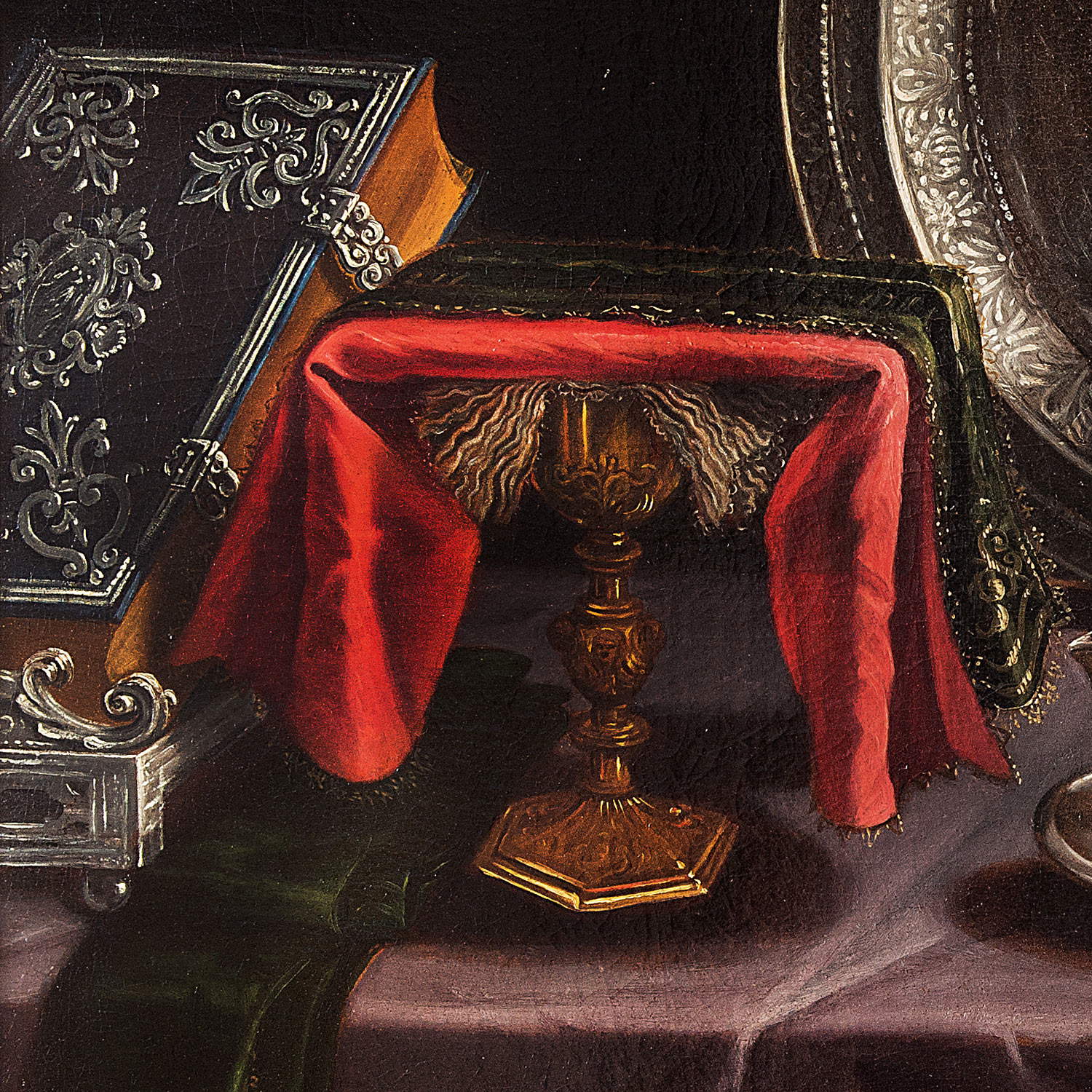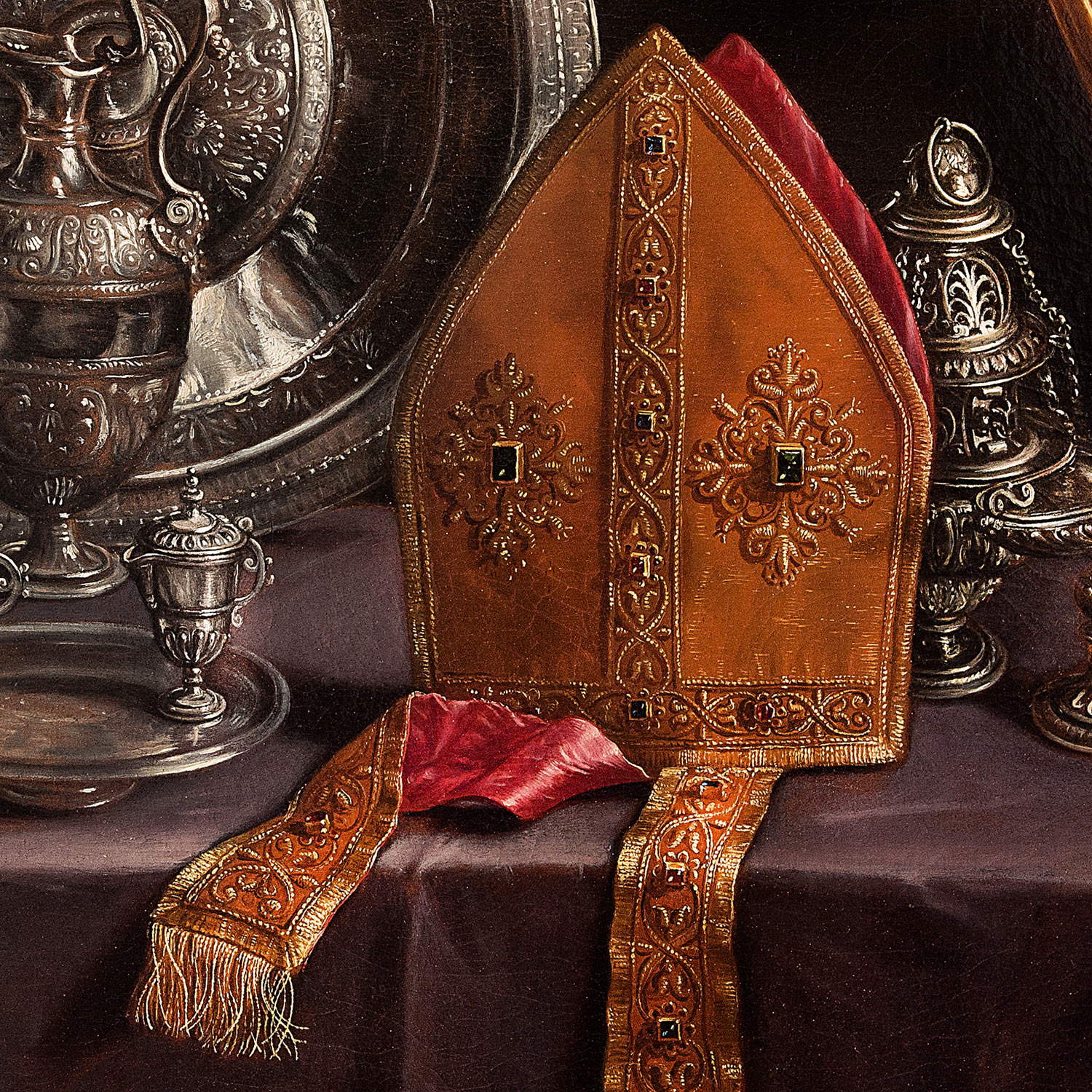A blossoming of rebirth appears in that secularly pulsating place of creativity and work that is the area of Cento, privileged cradle of art and the manufacturing heart between Ferrara and Bologna, which is now emerging with renewed vigor from the blows of the violent earthquake of 2012. Between the ever-renewed fecundity of the maternal countryside around the Reno River and the tireless industrial pace of the companies that crown the city, an Associationism of social cohesion is carefully placed, which concerns not only excellent sports (basketball) and promotional presences, but also cultural compunctions of relevant caliber such as the Associazione Imprenditori Centesi per la Cultura (Cento Entrepreneurs for Culture Association), which has been operating for over thirty years, and the noble Associazione Amici della Pinacoteca (Friends of the Art Gallery Association), which boasts among its illustrious names in the international arena.
It should be remembered that the Cento Pinacoteca lists among its works some absolute masterpieces by Giovanni Francesco Barbieri, known as Guercino (who was born here and worked here for a long time) and other excellent masters from his workshop: with such an admirable corpus it ranks among the best-known Italian museums. The town of Cento, moreover, was also the cradle of other great artists such as Marco Zoppo, a leading figure in 15th-century Po Valley painting; Marcello Provenzale, a virtuoso mosaicist at the court of Paul V Borghese; Stefano Galletti, a talented 19th-century sculptor who was also famous in Rome; and Aroldo Bonzagni, a whimsical post-Futurist painter and poster artist. Of some of them he keeps distinguished documents both in the Pinacoteca and in open-hearted private collections. The Municipal Administration, through competent directors, has also always supported and enriched the civic heritage, and has also promoted valuable exhibitions and study conferences, often in synergy with the cultural associations mentioned above. The citizens, it must be said, have for their part always corresponded and nurtured a widespread sensitivity around Fine Arts.
One can therefore well understand how, on the occasion of the International Antiques Exhibition in Florence in September 2019, the appearance for sale of a painting by Paolo Antonio Barbieri made the “Friends of the Pinacoteca” who, thanks to their President, had the ability to “stop” the painting, to share its purchase with the Entrepreneurs for Culture, to bring it to Cento and then donate it to the Pinacoteca, gasp with joy. Not only did the work appear to be of astonishing workmanship, but it could fill that long-standing domestic void, with relative regret, namely the lack of a pictorial autograph by Paolo Antonio. He (1603-1649), the younger and beloved brother of Giovanni Francesco, constantly had the role of organizer of the famous workshop, of speaker with patrons, of precise secretary on the Book of Accounts and (we must think) even of assistant-painter to the brilliant Guercino in several executive details in the still life genre.
On Saturday, December 11, 2021, in a solemn and very happy ceremony, the painting was handed over by the two Associations (the “Entrepreneurs” and the “Friends”) to the Mayor of Cento as an inalienable and cherished subject of the City. Here is the virtuous example! Professor Daniele Benati of the University of Bologna, the prince of studies on Emilian painting and far beyond, with a learned lecture on the occasion sketched the artistic profile of the Barbieri’s minor, which is not yet sufficiently delineated by research and related studies, but which now boasts a piece of coloring (one would say in lyrical terms) to leave one almost astonished, and certainly enchanted. The painting thus stands as an absolute masterpiece, capable of tirelessly attracting the admiration of all, documented in the inventory of Guercino’s great-grandchildren who inherited it in 1719.

The subject itself constitutes a surprise. It is known that Paolo Antonio had practiced what was quietly called “pictorial prose,” that is, the reproduction of objects and naturalistic elements, especially plants and animals described in the Book of Accounts in a generic way, and that he had executed in 1637 for the governor of Cento a splendid “Spezieria,” preserved today in Spoleto; also a “Basket with Chestnuts, Mushrooms and Fruit” now exhibited in Chicago, and other similar pieces for which examinations will be thorough, but the subject we present here marks a superb leap in quality that must make one think in new ways about the artist. It is a compact, well-balanced composition of sacred objects that together form the celebratory apparatus of an upcoming Holy Mass officiated by a bishop. A liturgical object proposal, of sacramental significance, highly refined in the rendering of silver, gold, gems and textiles, displayed in the absolute silence of expectation.
The handover ceremony took place on Saturday, December 11, 2021, and was illustrated by the presence of Cavaliere del lavoro Lucio Igino Zanon di Valgiurata, President of Credem Banca, which hosted the event in its representative hall, and ’important Roman expert Alessandra di Castro, President of the Italian Antiquarians. The official oration by Cristina Grimaldi Fava, President of the Friends of the Pinacoteca and the real heart of the meritorious purchase operation, crowned the happy affair with a lively and rich exposition of a cultural fabric that encompassed its broad historical and artistic values. The young mayor of Cento gratefully accepted the extraordinary donation and confirmed every care for the new arrangement of the important Pinacoteca. With this the town of Ferrara accomplishes (as we said) an “exemplum virtutis,” an exemplary act that other centers are imitating, or will have to positively imitate, in the Region.

It is good to reflect more on the subject in his time elaborated by Paolo Antonio, as it presents a singularity and a truly remarkable executive care. The writer has been able to observe the canvas for a long time and remembers its first impact as a very strong emotional surprise: a “silent” painting that imposes a depth of meaning of certainly spiritual significance. We are quite above a nature-dead though beautiful, and we must stop! By analogy the Latin invitation of the siste viator leaps to mind: stop thou that passest by! We also found this warning on the pillar of an ancient petrigna majesty toward an Apennine pass, between a tree and a hedge; in flickering engraved letters it said “siste gradum viator, imaginem mira et numen reverere lapillo.” It is a matter of pausing and considering cogitating, just as Barbieri’s painting invincibly wants us to do; to it we must not pay the minimal homage of the small stone but rather an identification of content that occupies our whole mind, an effort of resolution that opens up the meaning of those silvers, of that Gospel book, of the chalice and paten, of the miter and incense.
In this dazzling canvas of his, marvelous in its color registers, in its composition, in the visual ductus it invokes and guides, we find a canticle! It is a canticle of faith, with an extended, vibrant, solemn melody; its protagonists are the blazing golds and silvers of the sacred liturgy that await the Priest and the Altar. Such is the profound reason: waiting! Nothing is more intimate and heartfelt, more dense with emotion than a great, imminent, divine event that is about to happen. Well did the suspended spirits of the Byzantines know this when in their mosaics to touch the tuning fork of awareness and prostration they composed the etimasies. The glittering empty throne awaits the Holy Person, the sovereign eternal God; the lonely altar, rich with its candelabra and vessels, awaits the priestly hands for the Holy Sacrifice; the choir of Apostles with uplifted arms awaits the Christ of the Parousia. These were their supernal etimasies!
Paul Anthony Barbieri in his life of faith certainly meditated on the inexpressible intensity of the sacred preparations: Of the Book and the Stole, of the ampullae for Purification and Consecration, of the chalices and pyxes, of the thurible and incense, of the Crosier and Mitre, and then of the altar cloths and episcopal infulas; in them the gestures, the prayerful songs, the invocations and blessings of the Holy Catholic Liturgy are already gathered in imminence. And he, a tacit and prodigiously immersed figurator, makes them appear in virtual substance and paints them with a luminous, fascinating acrimony, unfailing to contemplation, and totally satisfying in the intimacy of the soul.
Yes, indeed here appear the glories of holy things, and here - then - siste gradum viator!


Warning: the translation into English of the original Italian article was created using automatic tools. We undertake to review all articles, but we do not guarantee the total absence of inaccuracies in the translation due to the program. You can find the original by clicking on the ITA button. If you find any mistake,please contact us.